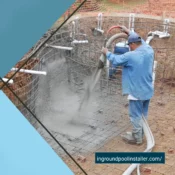The Complete Inground Pool Excavation Checklist for Homeowners

The Complete Inground Pool Excavation Checklist for Homeowners
Installing an inground pool is an exciting project that can transform your backyard into a personal oasis. However, the process begins long before the water starts flowing – with excavation. Proper planning and preparation during the excavation phase are crucial for ensuring the success of your pool installation. This guide will walk you through the essential steps every homeowner should know to make the process smooth and efficient.
Before breaking ground, it’s important to secure the necessary permits from your local government or municipality. Pool construction is regulated to ensure safety and compliance with zoning laws. Permits typically cover excavation, electrical work, and plumbing.
1. Planning and Permits
- Tip: Contact your local building department early to understand the requirements and avoid project delays.
2. Site Selection and Preparation
Choosing the right location for your inground pool is vital. Consider factors like sunlight exposure, accessibility, and proximity to utilities. Avoid areas with large tree roots or overhead power lines.
- Checklist:
- Clear debris and obstructions from the site.
- Mark the pool’s layout using stakes and string.
- Ensure the area is level and free of slopes.
3. Utility Line Marking
Before excavation begins, call your utility company to have underground lines marked. Hitting gas, water, or electrical lines can lead to dangerous and costly repairs.
- Pro Tip: Use flags or spray paint to mark the areas to avoid during excavation.
4. Excavation Process
Once the site is ready, the excavation team will dig out the pool shape according to the design plans. This stage involves heavy machinery and precision to ensure the correct depth and slope.
- Key Considerations:
- Ensure the excavation follows the pool’s blueprints.
- Keep an eye on soil conditions – rocky or sandy soil may require adjustments.
- Monitor the weather, as rain can delay the process.
5. Foundation and Drainage
After the initial dig, the base of the pool needs to be stabilized. A layer of gravel or sand is often added to create a smooth, level foundation. Proper drainage is essential to prevent water from accumulating around the pool structure.
- Tip: Consider adding a sump pump or drainage system to handle excess water during construction.
6. Inspection and Adjustments
Before proceeding with the next phase, a professional inspection may be required to ensure the excavation meets safety standards. This is the time to make any necessary adjustments to the depth, shape, or positioning of the pool.
Excavation is a critical step in building an inground pool and sets the stage for the rest of the installation. By following this checklist, homeowners can avoid common pitfalls and ensure the process runs smoothly. Ready to start your pool project? Plan carefully, work with trusted professionals, and soon you’ll be enjoying your backyard paradise.
All Categories
- Concrete
- Concrete
- Concrete pools
- Construction
- Custom Features and Add-ons
- Design
- Design
- Design
- Design & Construction
- Design and Planning
- Features & Customization
- Infinity edge
- inground pool
- inground pool builder
- inground pool installer
- Installation
- Installation Process
- Legal & Administrative
- Materials
- planning and design
- Pool Aesthetics and Customization
- Pool Design
- Pool Equipment
- Pool Features
- Pool Features
- Pool Installation Process
- Pool Materials
- Pool Materials
- Pool Types
- Project Planning
- Renovation
- Resurfacing
- top sights
- Types of Inground Pools
- Types of Inground Pools
- Types of Inground Pools
- Types of Inground Pools
- Water Treatment



